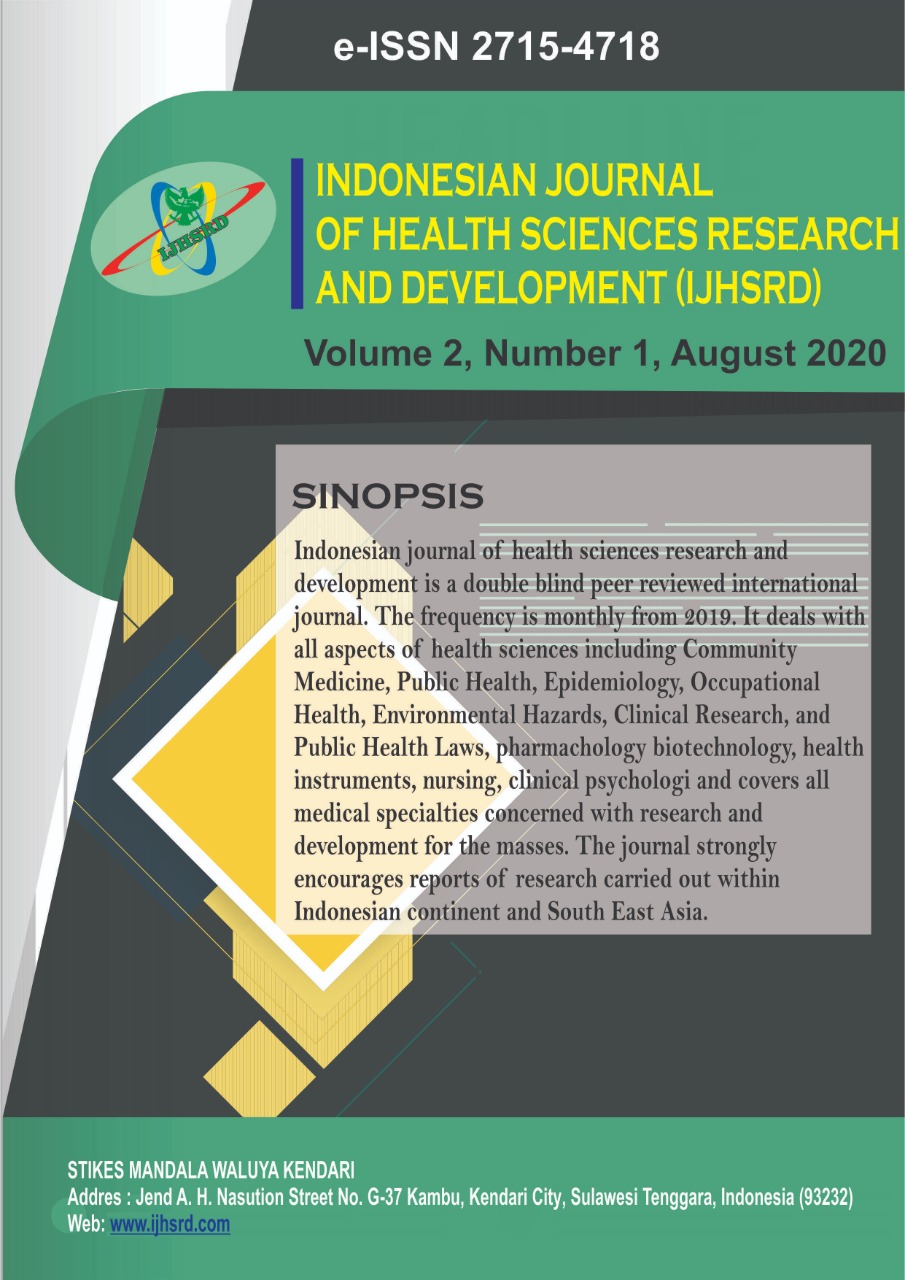Main Article Content
Abstract
Background: Aedes aegypti mosquitoes like to put their eggs in clean water so it is necessary to pay attention to the condition of the shelter of the water to always be closed because the water reservoir is in a closed condition it is less likely for the larvae to breed. Based on observation of 5 patient's house got mosquito larvae at water reservoir, other than that water reservoir left open and water quality slippery. This study aims to determine the relationship between water and aqueduct collection in the presence of Aedes aegypti larvae in the Work Area of ??Puuwatu Health Centre inKendari.
Methods:This type of research is a quantitative research with cross sectional study approach. The population is 265 and the sample is 72 respondents using random sampling technique
Results:The results in this study indicate that the statistical water storage test results X2 count 36.217 > X2 table 3.841 and water channel value X2 count 16,774 > X2 table 3,841. So it is concluded that there is a connection of water reservoirs and waterways with the presence of Aedes aegypti larvae in the Work Area of ??Puuwatu Health Centre in Kendari.
Conclusion: Suggested to the family should pay attention to environmental sanitation that can provide breeding place mosquito larvae breeding such as water and water ditch. In addition, the family must adjust the area of ??the house with the number of occupants in the house.
Keywords
Article Details

This work is licensed under a Creative Commons Attribution-ShareAlike 4.0 International License.
References
- Akbar MI. Analysis of the needs of general practitioners in Public Health Centres using Helath Workload Method. Public Health of Indonesia. 2020;6(2):63-9.
- Bustan, R. Factors relating to the implementation of DHF by the community in the working area of the Padang City Kuranji Public Health Center in 2007 Padang: FK Unand. 2007. (Indonesia)
- Wisfer, Easy Ways to Beat Dengue Fever. Jakarta: Kompas Book Publisher. 2013. (Indonesia)
- Department of Health RI. Behavior and Life Cycle of Aedes Aegypti Mosquito is very important to know in carrying out activities to eradicate mosquito nests, including periodic larvae monitoring. Jakarta: Ministry of Health Republic of Indonesia. 2004. (Indonesia)
- Department of Health RI. Jumantik Monitor (Jumantik) One of the Roles of Community Participation in the Management of Dengue Hemorrhagic Fever (DHF). 2004. (Indonesia)
- Suroso Dengue Hemorrhagic Fever. Situation and Eradication Program in Indonesia Seminar and Workshop on Various Aspects of Dengue and its Countermeasures. Depok: UI. 2012. (Indonesia)
- Sugiono. Combination Research Methods. Bandung: Alfabeta. 2016. (Indonesia)
- Department of Health RI. Instructions on the Implementation of the Eradication of Dengue Mosquito Nest (PSN-DBD) by the Monitors Monitors (Jumantik). Jakarta: DG PPM-PLP. 2004. (Indonesia)
- Department of Health RI. Behavior and Life Cycle of Aedes Aegypti Mosquito is very important to know in carrying out activities to eradicate mosquito nests, including periodic larvae monitoring. Jakarta: Ministry of Health Republic of Indonesia. 2004. (Indonesia)
- Erniwati. Stop Dengue Hemorrhagic Fever. Bogor. Cita Insan Madani. 2014. (Indonesia)
- Wisfer, Easy Ways to Beat Dengue Fever. Jakarta: Kompas Book Publisher. 2013. (Indonesia)
- Gilot, Tria Hasbi Akbar. Health Promotion Media for Dengue Fever Tropical Disease by the Surabaya. 2005. (Indonesia)
